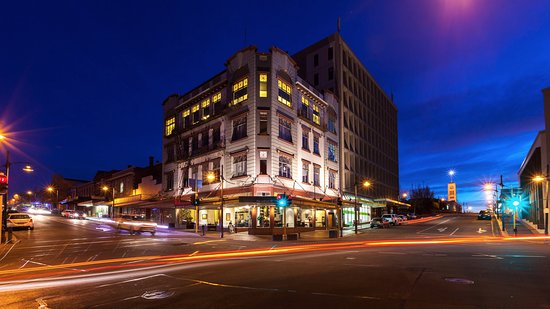Whangarei
17.89°C

Whangarei
17.89°C

Waitakere City
16.98°C

Manukau City
17.11°C

Papakura
24.46°C

Hauraki
17.26°C

Waikato
17.67°C

Matamata
18.46°C

Hamilton
17.51°C

Otorohanga
18.52°C

Rotorua
16.6°C

Taupo
15.44°C

Tauranga
19.27°C

Kawerau
18.6°C

Whakatane
19.64°C

Gisborne
15.51°C

New Plymouth
16.98°C

Stratford
8.97°C

Ruapehu
14°C

Wanganui
17°C

Palmerston North
16.41°C

Wairoa
19.19°C

Hastings
18.84°C

Napier
18.49°C

Masterton
15.49°C

Carterton
15.66°C

Porirua
15.99°C

Lower Hutt
16.45°C

Wellington
15.79°C

Tasman
9.35°C

Nelson
16.27°C

Marlborough
3.22°C

Kaikoura
15.48°C

Christchurch
12.59°C

Ashburton
12.52°C

Timaru
13.37°C

Waitaki
11.32°C

Waimate
13.08°C

Queenstown
12.38°C

Dunedin
14.33°C

Southland
9.98°C

Gore
11.31°C

Invercargill
12.06°C

Blenheim
14.73°C

Te Anau
27.35°C

Wanaka
11.17°C

Kaikoura
13.38°C

Stratford
13.54°C

Upper Hutt
15.9°C

About
The South Canterbury Museum has a focus on the natural heritage and history of the South Canterbury region of New Zealand - land, life and people.
We collect specimens, artifacts, images, documents and information that can be used to explore the region's heritage.
Extensive collections are housed in a purpose-built wing where they are catalogued and stored. These collections provide the raw materials for our exhibitions, education programmes, research and other activities.
Work is carried out by a dedicated team of people including fulltime and part-time staff, volunteers and interns.
Welcome to the Aigantighe Art Gallery, the home of art in South Canterbury. With frequently changing exhibitions, we offer visitors exciting and inspiring opportunities to view the Gallery’s rich collection along with works by local, national, and international artists. Our garden surrounding the Gallery showcases a wide variety of permanent sculptures and is always open to the public. We look forward to seeing you at the Gallery soon.
Open to the public all year round, the beautiful gardens surrounding the Aigantighe Art Gallery offers the perfect space for a gentle stroll or a family picnic under the trees.
Set on over two acres, the gardens are home to over 25 sculptures including works by Fred Graham, Buck Nin, and Pat Foster.
Thirteen of these sculptures were the result of an international Stone Carving Symposium that was held at Maungati in South Canterbury in February 1990. The concept for the symposium was developed by Darcy Nicholas, Lady Elworthy, Sir Peter Elworthy, Dawn Sommerville and Phillipa Graham over a two year period. The final line-up of sculptors that attended the symposium included Arnold Wilson, Bernard Matamera, Matt Pine, Locardia Ndandarika, Bernard Takawira, Albert McCarthy, Atsuo Okamoto, Fred Graham, Buck Nin, Dan de Har, Darcy Nicolas, John Bevan Ford and Nicholas Mukomberanwa. The sculptors used a stone known as Mt Somers Stone, a fine white limestone that was quarried from the Vincent Lime Quarry. At the conclusion of the symposium the finished sculptures were gifted to the nation, and the garden surrounding the Aigantighe Art Gallery was chosen as the site for their ongoing display.
While enjoying the beautiful gardens we ask all visitors to walk with care; supervise young children; refrain from climbing on sculptures; keep dogs on leads at all times; and take your rubbish with you when you leave.
The main entrance to the Timaru Botanic Gardens is in Queen Street near the corner of King Street. To enter you pass through the ornate Gloucester Gates which were opened by the Duke of Gloucester in 1935.
In 1864 Canterbury Provincial Council were asked by the people of Timaru to make a reserve out of unsold land known as Government Town at the south end of Timaru . This consisted of just over one square kilometer of land between Domain Avenue, North Street Craigie Avenue and the Ocean.
The Government lifted 23 hectares of land from ‘waste land regulations’ and surveyor Samuel Hewlings set aside 2 hectares for Botanic Gardens. In 1867 the area was placed under the care of the Borough of Timaru Park Commissioners, the following year the planting of trees and shrubs got underway.
$200 pounds was set aside in 1872 for a ranger’s cottage and advertisements soon appeared in the Timaru Herald inviting the public to make donations of trees, shrubs, flower roots, bulbs and seeds. The majority of early planting was carried out with convict labour from the local Timaru Gaol and floral fetes were organized to raise money for development of The Gardens.
The first glasshouse/conservatory was constructed in 1905 around the time when the south side of The Gardens were still being leased for the farming of crops and the grazing of sheep. The Band Rotunda was added in 1912 to commemorate the Coronation of King George V. The following year the marble statue of renowned Scottish poet Robert Burns was donated to the people of Timaru by former mayor James Craigie. By 1916 tennis courts and a bowling green had been laid down.
In 1938 land for the Timaru Hospital was subdivided from the Botanic Gardens providing patients and visitors with a lovely environment for rest, recuperation and reflection.
In 1988 the Shakespeare Trail was laid out and the Graeme Paterson Conservatory was built in honour of the former Director of Parks and Recreation.
In 2014 the Timaru Botanic Gardens was recognised as a Garden of National Significance by the New Zealand Gardens Trust.
Caroline Bay is the most widely known of all the parks in the Timaru District. When speaking to some from outside Canterbury about Timaru they will usually mention Caroline Bay, whereas locals will often refer to it as 'The Bay'.
The beach is sheltered by the harbour breakwater and is the only sandy beach between Oamaru and Banks Peninsula. March 2014 saw Caroline Bay beach being voted the most popular beach in the South Island.
Allied with the popular swimming beach is the annual summer carnival run by the voluntary Caroline Bay Association. The carnival has been operating for over a hundred years and draws people from around much of New Zealand to attend or assist with its operation. The carnival is a traditional family affair with free concerts, rides and sideshow style games.
Caroline Bay itself is located between the Pacific Ocean and the Timaru Central Business District, being separated from the main shopping area by the South Island Main Trunk Railway lines. The Piazza straddles the railway line and provides access for pedestrians via a grand staircase or via a lift which is unique for a public park in this country. Caroline Bay covers an area of 34 hectares excluding the beach.
Start at the Patiti Point car park. This wide, well made track has been formed on the edge of a shingle beach. It follows the coast line north towards Timaru harbour. It is an easy short walk which currently finishes at Stuart street. This track is good for cycling.
The sea on one side and the occasional surfer provide visual interest. Native planting will provide cover from the large storage shed on one side.
This walk can be an extension to the Patiti Point walk. It is also possible to continue north towards the eastern extension of the breakwater protection for the harbour. Fishing boats, shipping and yachts can usually be seen.
Ngāi Tahu are the indigenous people of Te Waipounamu, the South Island of New Zealand. Our whakapapa (genealogy) binds us to this land, and to our ancestors who discovered, explored and settled it. We are an amalgamation of Waitaha, the first people to settle here about 700 years ago, and Ngāti Mamoe and Ngāi Tahu who migrated later from Te Ika o Maui (the North Island).
At Te Ana our role is to act as the guardians of Māori rock art in the South Island on behalf of our local iwi Ngāi Tahu. We are a non-profit organization and all the revenue we earn from the centre and tours, is used to protect and revitalize our treasured rock art. By visiting Te Ana you are helping to protect our precious tribal legacy for the generations to come.
Māori rock art is a unique and amazing aspect of our local mana whenua history – we want to protect it so that the generations to come can appreciate and enjoy it as we do today. At Te Ana we’re focused on sharing this tribal taonga with as many young people as we can. Its all about kaitiakitanga (guardianship) – we want to grow a new generation of rock art guardians.